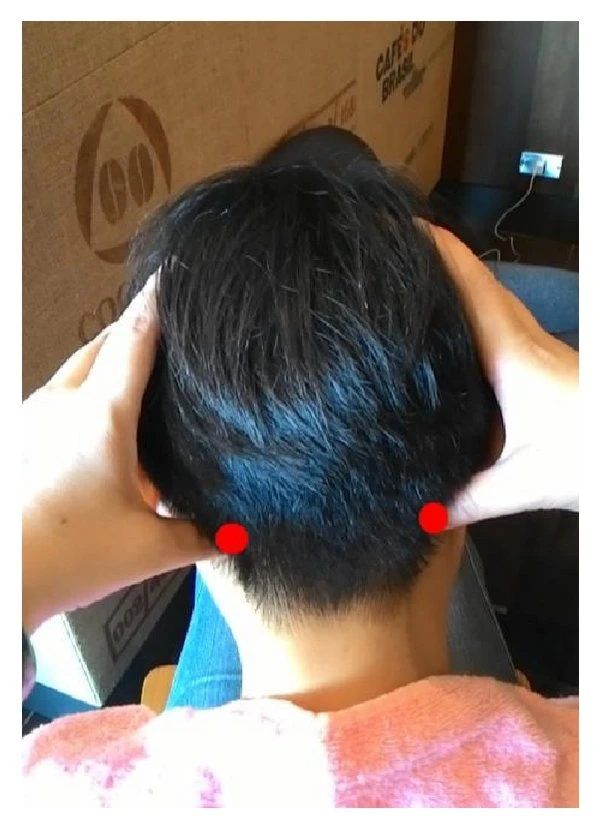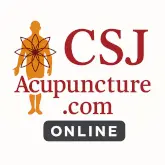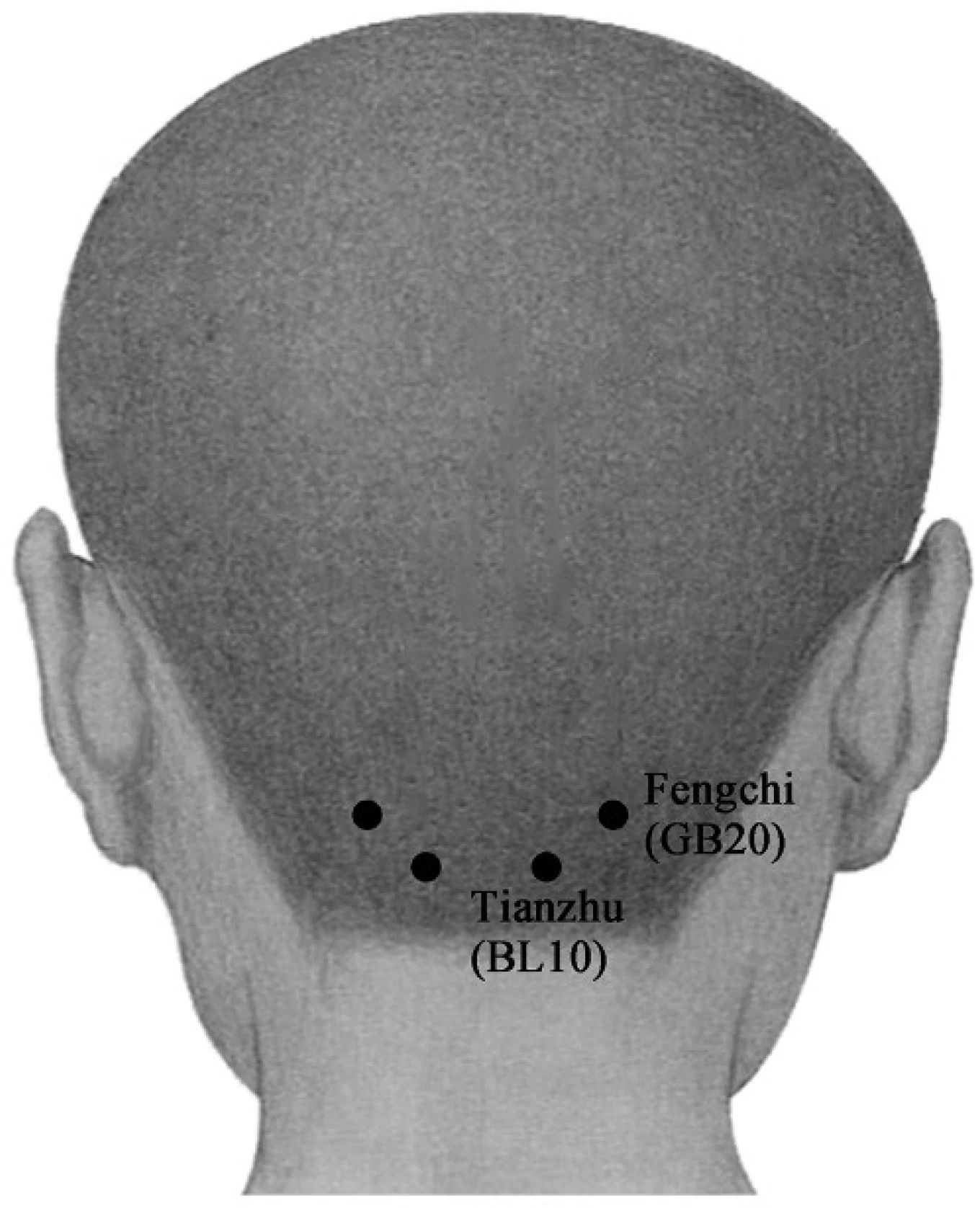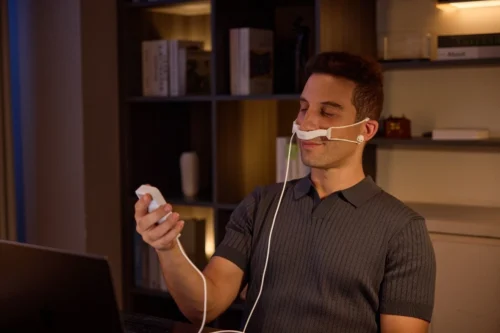This post may contain affiliate links and ads in which we may earn a small percentage of purchases.
Table of Contents
GB20 (Gallbladder 20) is a point I used frequent in the clinic. It is also on of the points that does not require deep insertions of the needles due to the nature of the location. It is used clinically for many different disorders and can be utilized in different patient settings.

If you’ve ever quit because meal plans felt overwhelming, this approach keeps it simple. The 21-Day Smoothie Diet gives you daily guidance, a detox reset, and easy recipes—so you can focus on consistency instead of planning. Instant digital access. Start today.
GB20 Acupuncture Point Location
In the depression between the upper portion of the sternocleidomastoid and the at the upper trapezius, on the same level as Du 16 (1 cun directly above center of hairline directly below the EOP (External Occipital Protuberance).1

GB20 Flexibility and Patient Accommodations
This point, located in the depression at the base of the skull, is primarily accessed when patients are facing down (prone), although it can also be effectively needled when the patient is seated in a massage chair or laying on their side. Acupuncture is versatile in nature, and allows for multiple approaches to treatment, and GB20 is a prime example of this adaptability, being a commonly used point for various conditions.
TCM Functions (Giovanni)2
- Expels wind (Internal and External)
- Subdues the Liver Yang
- Nourishes the marrow (brain / growth and development)
- Benefits the Ears and Eyes (eyes are a function of Liver organ/meridian)
- Links to Yang Wei Link Vessel ( Extraordinary Meridians)
“Wind” from the Traditional Chinese Medicine perspective is related to invasion of a pathogen or movement, chorea. From your common cold to stroke, conditions characterized by “wind” can vary in severity and causality.
A clear and beginner-friendly guide covering over 400 acupuncture points, ideal for students and learners.
 View Book
View Book
A stainless-steel acupuncture pen and gua sha set for massage, reflexology, and tension relief.
 View Product
View Product
Bio-med Functions
*(Partial list)
- Headache
- Stiff Neck
- Occipital Pain
- Vertigo
- Dizziness
- Optic neuritis (ON)3 and other eye disorders
- Post surgical for cervical including spinal fusion, laminectomy or laminoplasty
Research on Acupuncture Point GB20
GB20, Optics, and Circadian Rhythm
A 2020 study looked at the effects of GB20 on a condition known as optic neuritis, which is a frequent symptom of multiple sclerosis4. Major findings from this study include:
- Gene Expression and Neuroprotection: GB20 was shown to help up-regulate a gene called Nr4a3, known for its role in neuroprotection and axonal guidance, indicating potential benefits in supporting retinal health.
- GB20 needling was found to affect the expression of circadian rhythm genes (Per1 and Per2) in the retina, a new finding that aligns with other studies showing acupuncture’s impact on circadian rhythms in different tissues.
GB20 and Cerebral CO2 activity
A 2014 study investigated the effects of acupuncture treatment at the GB20 point on cerebral CO2 reactivity. Key findings showed that GB20 acupuncture specifically enhanced CO2 reactivity in the basilar artery of the brain, and that GB20 has the potential to influence distinct regions of the brain.5
GB20 Precautions and Contraindications
So this is a point I use precaution, for reasons which are practical and some obvious, but must be reviewed at all levels.
Deep needling of this point by practitioners is contraindicated in most textbooks, because of point location. As a practitioner I would use .5 cun size needles for that point, only inserting shallow about .25 cun. Also, I was taught insertion follows the direction towards the tip of the patient’s nose. Following proper insertion direction helps to protect the patient, which is why acupuncturists learn and practice safely.
In over 10 years of practice I have not had any unintended consequences from proper needling of GB20. Also, research shows a “14-session course of needling” at GB20 was found to be “relatively safe for treating”.6 However, preventing bruising (hematoma) and infection from best practices are essential. It is also beneficial to know complications from a qualified practitioner is rare7.
This article is intended for educational purposes only and is not intended to diagnose or provide treatment. Please consult with your healthcare providers about any medical conditions. Acupuncture should only be done by a qualified licensed acupuncturist.
Video Example of GB 20
- Cheng, X. (Ed.). (1999). Chinese Acupuncture and Moxibustion (Revised ed.). Foreign Languages Press. pp. 213-214. ↩︎
- Maciocia, G. (2005). The Foundations of Chinese Medicine: A Comprehensive Text for Acupuncturists and Herbalists (2nd ed.). Elsevier Churchill Livingstone. pp. 1049-1050. ↩︎
- Chen, J., Zhang, L., Gan, X., Zhang, R., He, Y., Lv, Q., Fu, H., Liu, X., & Miao, L. (2020). Effects of retinal transcription regulation after GB20 needling treatment in retina with optic neuritis. Frontiers in Integrative Neuroscience, 14. https://doi.org/10.3389/fnint.2020.568449 ↩︎
- Chen, J., Zhang, L., Gan, X., Zhang, R., He, Y., Lv, Q., Fu, H., Liu, X., & Miao, L. (2020). Effects of retinal transcription regulation after GB20 needling treatment in retina with optic neuritis. Frontiers in Integrative Neuroscience, 14. https://doi.org/10.3389/fnint.2020.568449 ↩︎
- Im, J.-W., Moon, S.-K., Jung, W.-S., Cho, K.-H., Kim, Y.-S., Park, T.-H., Ko, C.-N., Park, J.-M., Park, S.-U., & Cho, S.-Y. (2014). Effects of acupuncture at GB20 on CO2 reactivity in the basilar and middle cerebral arteries during hypocapnia in healthy participants. The Journal of Alternative and Complementary Medicine, 20(10). https://doi.org/10.1089/acm.2013.0240 ↩︎
- Wen, Y., Zhang, C., Zhao, X.-F., Deng, S., He, S., Huang, L., Tian, G., & Meng, Z. (2016). Safety of different acupuncture manipulations for posterior circulation ischemia with vertigo. Neural Regeneration Research, 11(8). https://doi.org/10.4103/1673-5374.189191 ↩︎
- Wen, Y., Zhang, C., Zhao, X.-F., Deng, S., He, S., Huang, L., Tian, G., & Meng, Z. (2016). Safety of different acupuncture manipulations for posterior circulation ischemia with vertigo. Neural Regeneration Research, 11(8). https://doi.org/10.4103/1673-5374.189191 ↩︎
Medical Disclaimer: This article is for informational and educational purposes only and is not a substitute for professional medical advice, diagnosis, or treatment. Always consult a qualified healthcare provider with any questions about a medical condition or treatment.






